Miele DA326-1I, DA329-1I User Manual
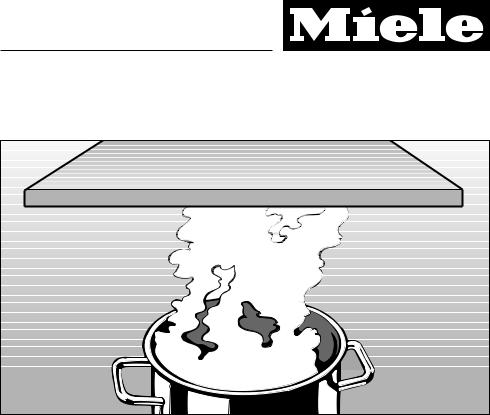
Operating and Installation
Instructions
Ventilation System
DA 326-1 i
DA 329-1 i
To prevent accidents and machine damage, read these instructions before
UV
installation or use. |
M.-Nr. 05 864 020 |

Contents
IMPORTANT SAFETY INSTRUCTIONS . . . . . . . . . . . . . . . . . . . . . . . . . . . . . . . . . 4
Guide to the hood . . . . . . . . . . . . . . . . . . . . . . . . . . . . . . . . . . . . . . . . . . . . . . . . . 8
Functional description . . . . . . . . . . . . . . . . . . . . . . . . . . . . . . . . . . . . . . . . . . . . 10
Operation . . . . . . . . . . . . . . . . . . . . . . . . . . . . . . . . . . . . . . . . . . . . . . . . . . . . . . . 11 Turning the fan on . . . . . . . . . . . . . . . . . . . . . . . . . . . . . . . . . . . . . . . . . . . . . . . . . 11 Selecting the power level . . . . . . . . . . . . . . . . . . . . . . . . . . . . . . . . . . . . . . . . . . . 11 Turning the fan off . . . . . . . . . . . . . . . . . . . . . . . . . . . . . . . . . . . . . . . . . . . . . . . . . 11 Turning the light on . . . . . . . . . . . . . . . . . . . . . . . . . . . . . . . . . . . . . . . . . . . . . . . . 12 Turning the light off . . . . . . . . . . . . . . . . . . . . . . . . . . . . . . . . . . . . . . . . . . . . . . . . 12
Cleaning and care . . . . . . . . . . . . . . . . . . . . . . . . . . . . . . . . . . . . . . . . . . . . . . . . 13 Cleaning the casing . . . . . . . . . . . . . . . . . . . . . . . . . . . . . . . . . . . . . . . . . . . . . . . . 13 Grease filter . . . . . . . . . . . . . . . . . . . . . . . . . . . . . . . . . . . . . . . . . . . . . . . . . . . . . . 13 Inserting / replacing the active charcoal filters . . . . . . . . . . . . . . . . . . . . . . . . . . . 16 Changing the light bulbs . . . . . . . . . . . . . . . . . . . . . . . . . . . . . . . . . . . . . . . . . . . . 17
After Sales Service . . . . . . . . . . . . . . . . . . . . . . . . . . . . . . . . . . . . . . . . . . . . . . . 18
2

Contents
Installation instructions . . . . . . . . . . . . . . . . . . . . . . . . . . . . . . . . . . . . . . . . . . . 19
Caring for the environment . . . . . . . . . . . . . . . . . . . . . . . . . . . . . . . . . . . . . . . . . 21
IMPORTANT SAFETY INSTRUCTIONS . . . . . . . . . . . . . . . . . . . . . . . . . . . . . . . . 22
Electrical data. . . . . . . . . . . . . . . . . . . . . . . . . . . . . . . . . . . . . . . . . . . . . . . . . . . . 23
Appliance dimensions. . . . . . . . . . . . . . . . . . . . . . . . . . . . . . . . . . . . . . . . . . . . . 24
Installation . . . . . . . . . . . . . . . . . . . . . . . . . . . . . . . . . . . . . . . . . . . . . . . . . . . . . . 28 Included parts . . . . . . . . . . . . . . . . . . . . . . . . . . . . . . . . . . . . . . . . . . . . . . . . . . . . 28
Installation . . . . . . . . . . . . . . . . . . . . . . . . . . . . . . . . . . . . . . . . . . . . . . . . . . . . . . 30 1. Non-return flap . . . . . . . . . . . . . . . . . . . . . . . . . . . . . . . . . . . . . . . . . . . . . . . . . . 30 2. Reducing collar . . . . . . . . . . . . . . . . . . . . . . . . . . . . . . . . . . . . . . . . . . . . . . . . . 30 3. Runners . . . . . . . . . . . . . . . . . . . . . . . . . . . . . . . . . . . . . . . . . . . . . . . . . . . . . . . 31 4. Hang the cabinet door . . . . . . . . . . . . . . . . . . . . . . . . . . . . . . . . . . . . . . . . . . . . 32 5. Position the appliance in the cabinet. . . . . . . . . . . . . . . . . . . . . . . . . . . . . . . . . 32 6. Align the height of the appliance . . . . . . . . . . . . . . . . . . . . . . . . . . . . . . . . . . . . 32 7. Installation of a lightshield . . . . . . . . . . . . . . . . . . . . . . . . . . . . . . . . . . . . . . . . . 33 8. Align the depth of the appliance . . . . . . . . . . . . . . . . . . . . . . . . . . . . . . . . . . . . 34 9. Secure the appliance. . . . . . . . . . . . . . . . . . . . . . . . . . . . . . . . . . . . . . . . . . . . . 34 10. Install side spacers . . . . . . . . . . . . . . . . . . . . . . . . . . . . . . . . . . . . . . . . . . . . . 34 11. Spacer strip for the rear of the appliance . . . . . . . . . . . . . . . . . . . . . . . . . . . . 35 12. Light cover . . . . . . . . . . . . . . . . . . . . . . . . . . . . . . . . . . . . . . . . . . . . . . . . . . . . 36 13 a. Air extraction mode. . . . . . . . . . . . . . . . . . . . . . . . . . . . . . . . . . . . . . . . . . . . 37 13 b. Recirculation mode. . . . . . . . . . . . . . . . . . . . . . . . . . . . . . . . . . . . . . . . . . . . 37 14. Electrical connection . . . . . . . . . . . . . . . . . . . . . . . . . . . . . . . . . . . . . . . . . . . . 38
Air extraction . . . . . . . . . . . . . . . . . . . . . . . . . . . . . . . . . . . . . . . . . . . . . . . . . . . . 40
3
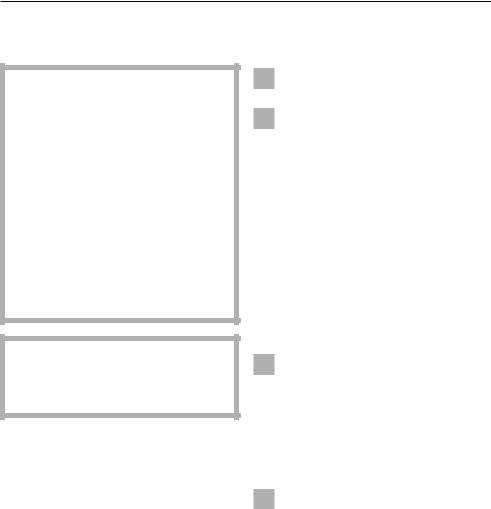
IMPORTANT SAFETY INSTRUCTIONS
Read these Operating Instructions carefully before installing or using the Ventilation System.
This appliance is intended for residential use only. Use the appliance only for its intended purpose. The manufacturer cannot be held responsible for damages caused by improper use of the hood.
This appliance complies with current safety requirements. Improper use of the appliance can lead to personal injury and material damage.
READ AND SAVE THESE
INSTRUCTIONS
CAUTION
For General Ventilating Use Only.
Do Not Use To Exhaust Hazardous
Or Explosive Materials And Vapors.
This appliance is designed to vent cooking smoke and odors only.
Be certain your appliance is properly installed and grounded by
a qualified technician.
To guarantee the electrical safety of this appliance, continuity must exist between the appliance and an effective grounding system. It is imperative that this basic safety requirement be met. If there is any doubt, have the electrical system of the house checked by a qualified electrician. The manufacturer can not be held responsible for damages caused by the lack, or inadequacy of, an effective grounding system.
Before connecting the appliance to the power supply make sure that
the voltage and frequency listed on the data plate correspond with the household electrical supply. This data must correspond to prevent machine damage. Consult a qualified electrician if in doubt.
Installation work and repairs should only be performed by a qualified
technician in accordance with all applicable codes and standards. Repairs and other work by unqualified persons could be dangerous and the manufacturer will not be held responsible.
4
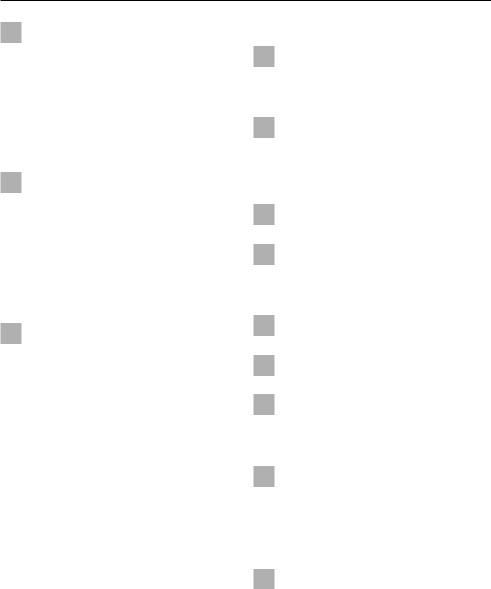
IMPORTANT SAFETY INSTRUCTIONS
This equipment is not designed for maritime use or for use in mobile
installations such as caravans or aircraft. However, under certain conditions it may be possible for an installation in these applications. Please contact the nearest Miele dealer or the Technical Service Department with specific requirements.
Before servicing or cleaning the unit, switch power off at the service
panel and lock the service disconnecting means to prevent power from being switched on accidentally. When the service disconnecting means can not be locked, securely fasten a prominent warning device, such as a tag, to the service panel.
Before discarding an old appliance, unplug it from the
power supply and remove the power cord and any doors to prevent hazards.
Use
Do not allow children to play with or operate the appliance or its
controls. Supervise its use by the elderly or infirm.
Be careful when preparing a flambé beneath the hood.
Flames may be drawn up into the hood by the suction or grease filters may catch fire.
Never operate gas burners without pots.
Do not leave cooking surfaces unattended while in use.
Overheated food, oil and grease can catch fire.
Do not use the hood without the grease filters in place.
Clean the grease filters regularly. Dirty filters are a fire hazard.
Do not use a steam cleaner to clean the hood. Steam could
penetrate electrical components and cause a short circuit.
In areas subject to infestation by cockroaches or other pest, keep
the appliance and its surroundings clean at all times. Any damage caused by cockroaches or other pest will not be covered under warranty.
Always turn on the hood when using the cooktop to prevent
damage from condensation.
5
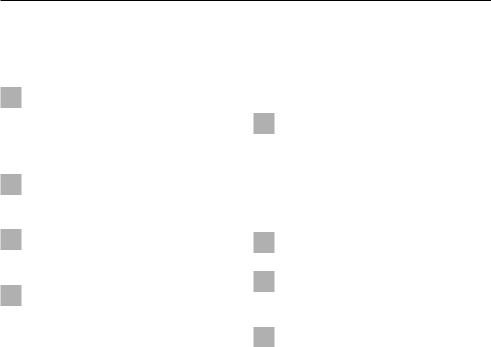
IMPORTANT SAFETY INSTRUCTIONS
, WARNING - TO REDUCE THE RISK OF A RANGE TOP GREASE FIRE:
Never leave surface units unattended at high settings.
Boilovers cause smoking and greasy spillovers may ignite. Heat oils slowly on low or medium settings.
Always turn the hood “ON” when cooking at high heat or when
cooking flaming foods.
Clean ventilating fans frequently. Grease should not be allowed to
accumulate on the fan or filter.
Use proper pan size. Always use cookware appropriate for the size
of the surface element.
, WARNING
TO REDUCE THE RISK OF INJURY TO PERSONS IN THE EVENT OF A RANGE TOP GREASE FIRE, OBSERVE THE FOLLOWING:
SMOTHER FLAMES with a close fitting lid, cookie sheet, or metal
tray, then turn off the burner.
BE CAREFUL TO PREVENT BURNS. If the flames do not go out immediately,
EVACUATE AND CALL THE FIRE DEPARTMENT.
NEVER PICK UP A FLAMING PAN - You may be burned.
DO NOT USE WATER, including wet dishcloths or towels - a violent
steam explosion will result.
Use an extinguisher
ONLY if:
–You know you have a Class ABC extinguisher, and you already know how to operate it.
–The fire is small and contained in the area where it started.
–The fire department is being called.
–You can fight the fire with your back to an exit.
6
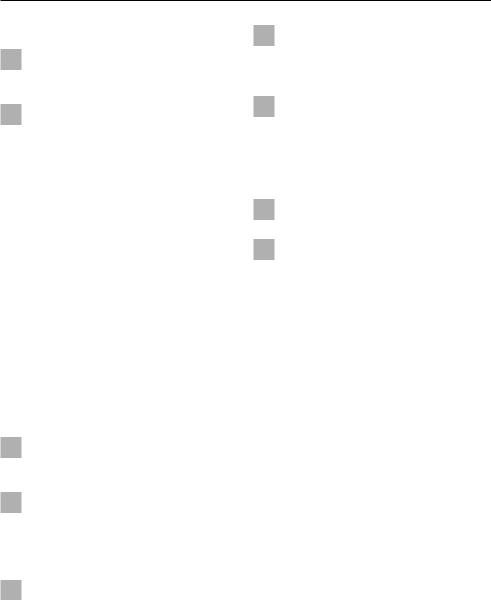
IMPORTANT SAFETY INSTRUCTIONS
Installation
, WARNING
To reduce the risk of fire only use metal ductwork.
When installing the hood, follow the recommended minimum safety
distances between a Miele cooktop and the hood:
–22" (55 cm) above electric cooktops,
–26" (65 cm) above gas cooktops,
–26" (65 cm) above an open grill.
If local building codes require a greater safety distance, follow their requirement.
For non-Miele cooking appliances maintain the safety distances recommended by the appliance manufacturer in their instructions. If there is more than one appliance beneath the hood and they have different minimum safety distances always select the greater distance.
Be careful not to damage hidden electrical wiring or plumbing when
cutting or drilling into the wall or ceiling.
Do not use an extension cord to connect the appliance to electricity.
Extension cords do not guarantee the required safety of the appliance, (e.g. danger of overheating).
Do not install this hood over cooktops burning solid fuel.
Any fittings, sealant, or materials used to install the ductwork must be made of approved non-flammable
materials.
Never connect an exhaust hood to an active chimney, dryer vent, vent flue, or room ventilating ductwork. Seek
professional advice before connecting an exhaust hood vent to an existing, inactive chimney or vent flue.
Ducted fans must always be vented outdoors.
Make sure that the airflow in the room is sufficient for combustion
and exhausting of all non-electric heating appliances (water heaters, gas cooktops, gas ovens, etc.), otherwise backdrafts may occur. Follow the heating manufacturer’s guidelines and safety standards or those published by the National Fire Protection Association (NFPA), or the American Society for Heating, Refrigeration and Air Conditioning Engineers (ASHRAE).
If in doubt, consult an experienced professional.
7
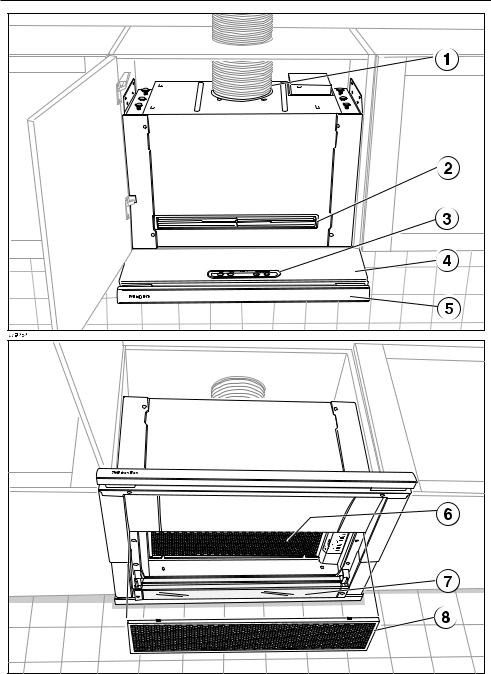
Guide to the hood
8

Guide to the hood
a Vent connection |
i Light button |
b Active charcoal filter slot |
j On/Off button |
c Control panel |
k Power level buttons |
d Pull-out |
Four fan speed selection |
|
|
deflector plate |
|
e DFB Facia Panel |
|
(must be ordered separately) |
|
f Internal grease filter |
|
g Overhead cooktop light |
|
h External grease filter |
|
9
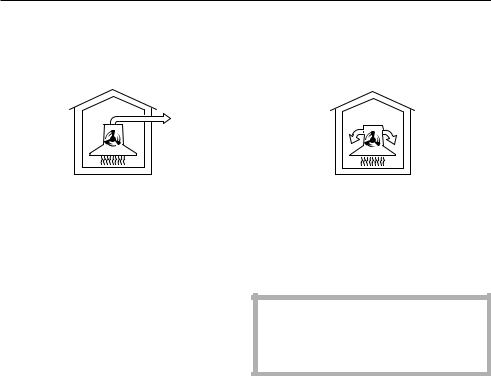
Functional description
The hood offers two modes of operation:
Air extraction
The air is drawn in and cleaned by the grease filters and directed outside.
The hood comes equipped with a non-return flap. This flap automatically closes when the hood is turned off so that no exchange of outside air and room air can occur. When the hood is turned on, the air pressure of the exhaust fan automatically opens the flap blowing the inside air and cooking odors outside.
Recirculation mode
Air is drawn through the grease filters and an active charcoal filter. The filtered air is then recirculated back into the kitchen through a vent at the top of the hood’s chimney.
Before using the hood in recirculation mode, ensure that the active charcoal filters are in place, see "Cleaning and care".
10
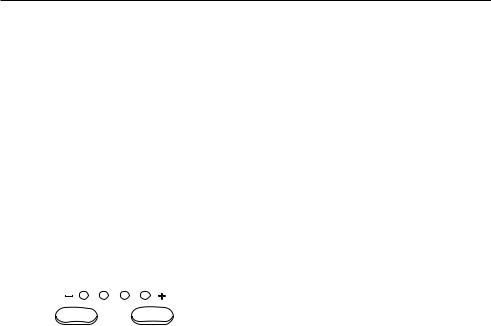
Operation
Turning the fan on
^Pull the deflector plate out about 2" (5 cm).
The hood will operate at power level "II".
Selecting the power level
Depending on how much the air needs to be filtered, there are four power levels available.
For normal cooking a low to medium level is usually sufficient.
For frying or cooking food with a strong aroma use the highest level.
Fan performance
The maximum air flow capacity is 625 cfm. Factors such as narrow duct diameter and bends will affect this value.
There will also be a slight decrease in airflow for hoods operated in recirculation mode due to the active charcoal filter.
Level 1 operates at 40% capacity Level 2 operates at 60% capacity Level 3 operates at 80% capacity Level 4 operates at 100% capacity
Lower |
Higher |
^Use the power level buttons to select the power level required.
The indicators show which power level has been chosen.
Turning the fan off
^Press the On/Off button to turn the fan off.
or
^ Push the deflector plate back in.
The next time the deflector plate is pulled out the hood will operate at power level "II".
11

Operation
Turning the light on |
Turning the light off |
The light for illuminating the cooktop can be turned on or off independently of the fan.
^Pull the deflector plate out 1.5" (3 cm).
^Press the light button.
^When the light is turned on the indicator next to the button illuminates
^Press the light button again.
or
^Push the deflector plate back in.
The next time the deflector plate is pulled out the light will come back on.
12
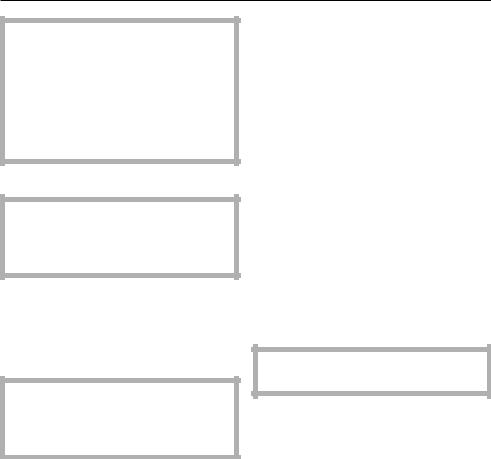
Cleaning and care
Before servicing or cleaning the hood, disconnect it from the power supply by "tripping" the circuit breaker or unplugging it.
Make sure power is not restored to the appliance while maintenance or repair work is performed.
Cleaning the casing
Never use abrasive cleaners, scouring pads, steel wool or caustic (oven) cleaners on the hood. They will damage the surface.
^All external surfaces and controls can be cleaned with warm water and liquid dish soap applied with a soft sponge.
^Wipe dry using a soft cloth.
Do not use too much water when cleaning the controls. Water could penetrate the electronics and cause damage.
Stainless steel surfaces
Stainless steel surfaces can be cleaned using a non-abrasive stainless steel cleaner.
To help prevent resoiling, a conditioner for stainless steel can be applied.
Grease filter
The reusable metal grease filters remove solid particles from the vented kitchen air like grease and dust, etc.
The hood has an external filter which is visible from beneath. An internal filter is situated above the external filter within the casing.
The grease filters should be cleaned every 3-4 weeks or whenever the grease filter indicator lights.
Always clean both filters.
Dirty filters are a fire hazard.
13
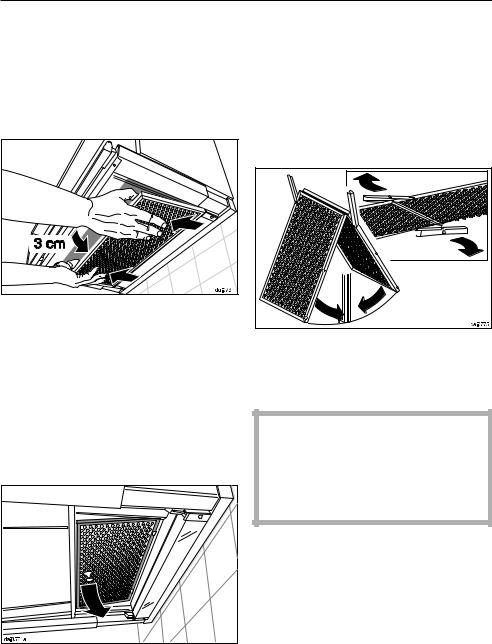
Cleaning and care
Removing the filters
External filter
^To remove the external filter pull the deflector plate out slightly.
^ Turn the fan off. |
^Holding the external filter at the front tilt it approximately 1" (3 cm) downwards and then pull it towards you to remove.
Internal filter
^Pull the deflector plate out to its full extension.
The internal filter will now be visible.
^Holding it by the handle pull it downwards to remove.
^ Cleaning the filters
–by hand: with a nylon brush in a mild solution of warm water and liquid soap.
–in a dishwasher: place the filters vertically in the lower basket, checking that the spray arm is not blocked.
^DA 329-1 i
The external grease filter can be folded and cleaned in the dishwasher by turning the latches as shown.
Depending on the detergent, cleaning the grease filters in a dishwasher may cause permanent discoloration of the filter surface. Performance of the filter will not be affected by this discoloration.
^After cleaning, the filters can be placed on a towel to air dry.
^While the filters are removed, clean any dirt or grease from the filter casing to prevent the risk of fire.
14
